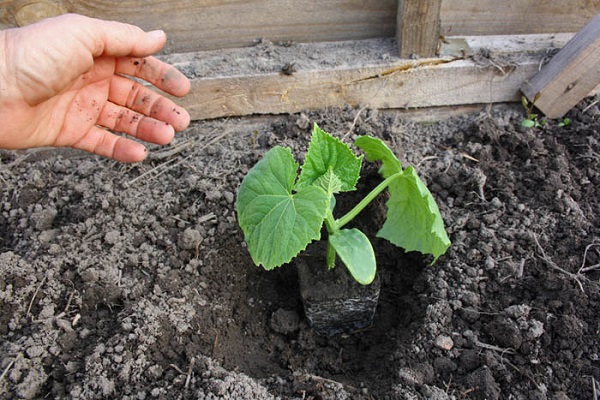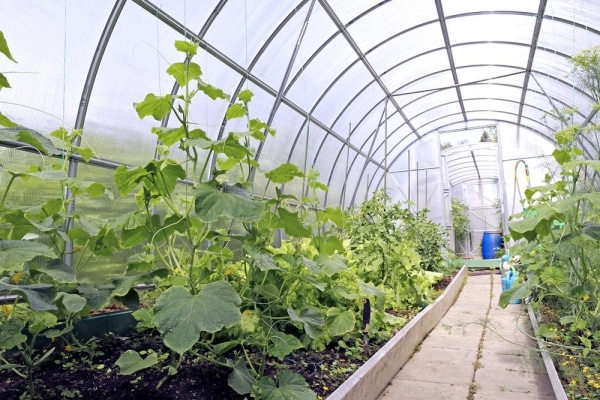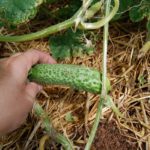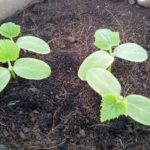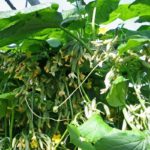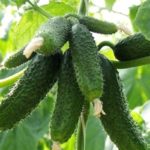There are different varieties of cucumbers on the market that are adapted to the Russian climate and soils. The cucumber, under the simple but sonorous name Athos, was relatively recently bred by the domestic “Michurins” for cultivation in private plots of Russia, Ukraine and Moldova. This is a so-called parthenocarpic hybrid for both open ground and protected with film. What is parthenocarpic? This is a plant that does not require pollination by bees. Despite all this, the fruitfulness of the Atos cucumber hybrid is high, as is the quality of its fruits.
Characteristics of Athos
From the beginning of germination to fruiting, the hybrid matures in about a month or more. Already in mid-summer, many ripening fruits form on the plants.
What are the advantages of the variety:
- early fruiting period;
- excellent germination;
- compact cucumber size.
The plant can easily survive sudden temperature changes, heat and even drought. In other words, Atos F1 cucumbers are able to survive where others simply die. The safety of the crop is high, up to two weeks under normal conditions.
What makes the bush special?
The tomato bush reaches a height of one and a half to two meters. The number of flowers in a node reaches 3–5. Up to two dozen fruits can ripen on one bush at the same time. These are such wonderful characteristics.
In addition, the bushes are capable of growing considerably; when planting, you need to provide for their distance from each other - 70–80 centimeters. The plants have medium branching, and the leaves are of a regular shape and dark green in color.
Description of fruits
Let's start the description of Atos cucumbers with the fact that they bear fruit in a bouquet. The fruits have an even green color, the inside is hard, without voids. When biting into a cucumber, it produces a typical appetizing crunch; the taste is without bitterness, even at the ends of the fruit.
Zelentsy reach a weight of 70 to 100 grams and a length of approximately 10 centimeters. The tubercles on the surface of the fruit are barely noticeable. If you want to enjoy cucumbers to your heart’s content, then Atos is a great option. Such hybrids are suitable for fresh consumption, for preparing salads, and for canning. The yield level is 10–12 kilos per square meter of land.
Plant care
The hybrid requires the following operations to be performed regularly:
- pinching (this is when shoots above the fourth leaf are removed);
- loosening and weeding the soil;
- evening or morning watering with warm water (not lower than 20 degrees and every 1–2 days);
- fertilizing with organic matter (mullein, bird droppings) and mineral fertilizers (superphosphates, nitrogenous substances);
- timely tying.
It is preferable to tinker with this type of cucumbers in a greenhouse.
Hybrids of the Athos series are grown either by immediately sowing seeds in the ground, or using seedlings, which are transplanted into beds after the end of night frosts in the spring. Cucumber seed planting depth - up to two centimeters.
Disease Control
Parthenocarpic plants are resistant to many dangerous diseases. In our case, the Atos F1 cucumber easily copes with aggression from cucumber mosaic and powdery mildew. The variety also has excellent resistance to root rot and downy mildew. In this case, it is necessary to adhere to a 90 percent humidity regime and normal temperature values of 20–22 degrees inside the greenhouse.
For prevention, you should ventilate the greenhouse a couple of times a week. If the structure is made of glass, then regularly wash it from dirt with a warm soapy solution. When growing a hybrid in unprotected soil, make sure that the soil does not become waterlogged or, conversely, does not dry out.
In conclusion…
Caring for and growing cucumbers is not such a simple task as it might seem from the outside. However, it's worth it! This is evidenced by reviews from citizen gardeners. If you do everything in a timely manner and correctly, then the Athos cucumber will present a good harvest as a reward for your efforts. You just need to not be lazy, water the plants at the roots in a timely manner, mulch them, weed the soil, generously fertilize, identify diseases, properly ventilate and close the greenhouse.




